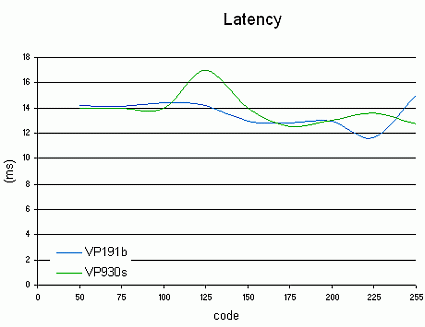ViewSonic VP930 LCD Monitor: The New Champion?
Spatial Uniformity
We measured the uniformity of the panel's lighting.
For those of you who aren't used to the Tom's Hardware tests, here's the method we use:
We set the panel at 50% brightness and 50% contrast and measure the uniformity of the lighting on a white image separated into 64 areas of equal size. The brightest point is considered to be 100%, and the previously measured black value is considered 0%, with the other values obtained distributed between them.
The overall uniformity of this panel was very good. But there was no real gain compared to the VP191b. Users on newsgroups complain of a lack of uniformity of lighting in the corners, but that didn't appear to be true of the monitor we were sent for testing. It's true that you can see that the lower right corner is brighter, but it was no big deal. And it wasn't detectable even on a completely black image.
Colors
Recall that we evaluate color rendering on five points according to several criteria. Color fidelity is naturally one of them, black depth is another, as is the appropriateness of the brightness level to the device's function. For example, a computer monitor that's too bright will lose points, but so will a TV set that's too dark.
ViewSonic VP930: No Faster
We measured the panel's actual latency:
Get Tom's Hardware's best news and in-depth reviews, straight to your inbox.
Again we'll recall our test method:
The curve shows the different latency values for different levels of gray. A black-white alternation is shown on the curve by a point at X-axis 255, a black-gray alternation produces a point at X-axis 125, a black-dark gray alternation shows as 50, etc.
The official ISO latency rating specified by the manufacturer is only for black/white transitions (0/255). While the value we measured agrees with the manufacturer on this point, it's not of much value in judging the actual responsiveness of the panel in practice.
Looking at this graph, you might well question the advantage of this model over the 191b - no real progress has been made in the latency department, and the panel even tested a tad slower. When we looked under the hood, we found that the panel used is an AUO M190EN3 V2. This is a minor update of the panel used in the 191b, but in reality, there's been no gain in response time. The oscilloscope signal was very clean and showed almost no overshoot. That means no precision has been lost, which is a good thing. But if you were expecting VP930 to be a new breed of racehorse, you'll be disappointed this time around.

